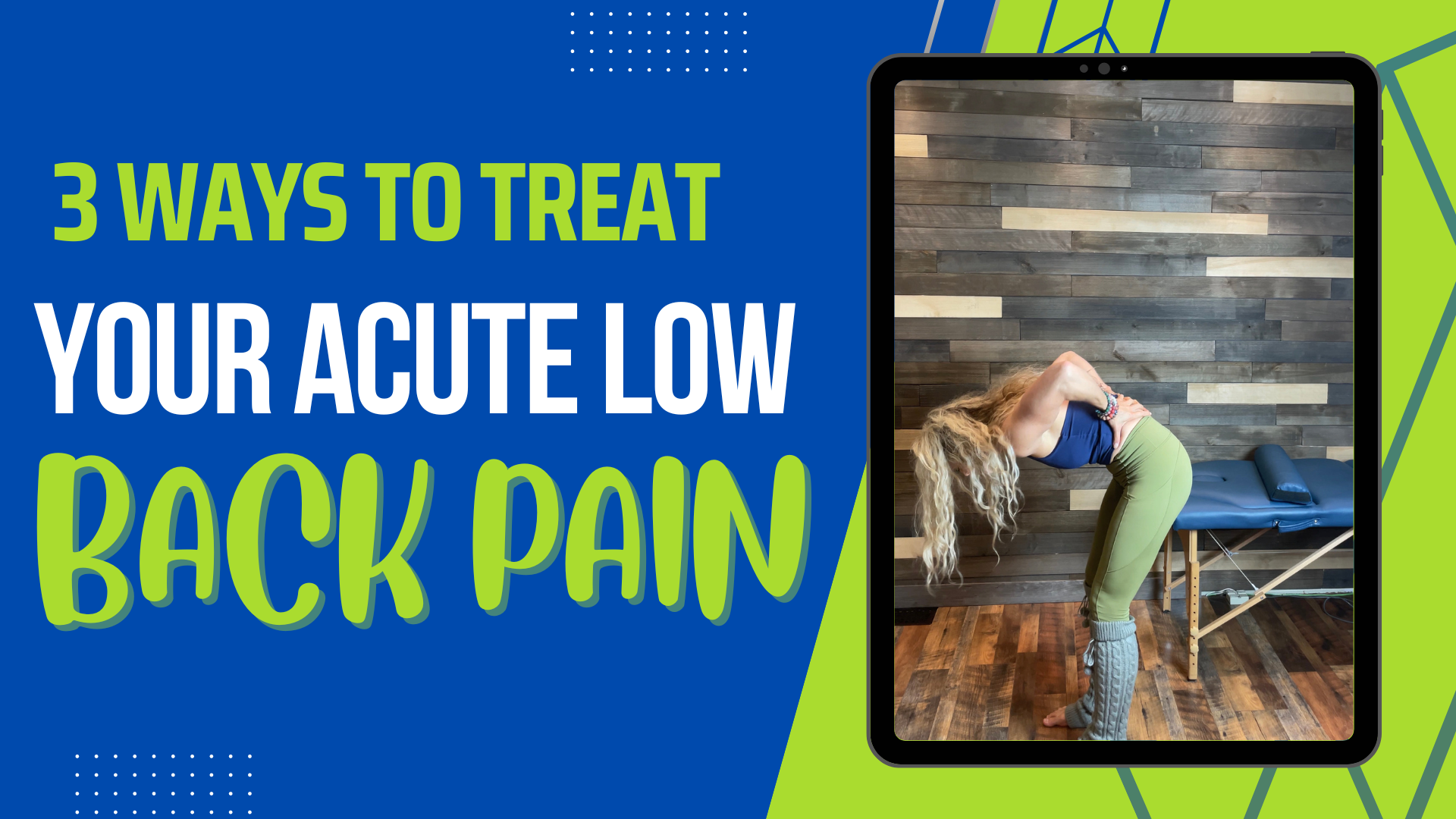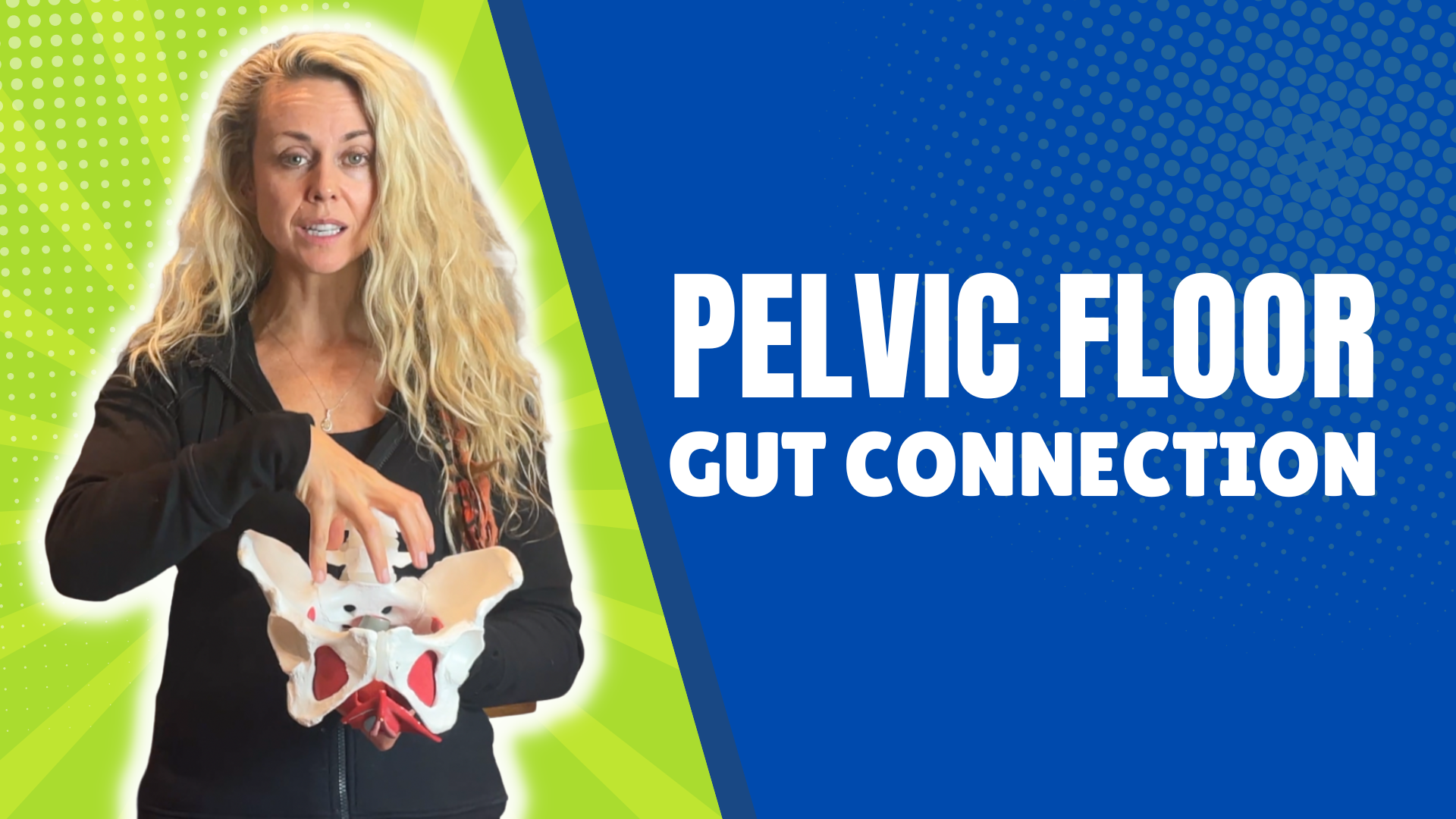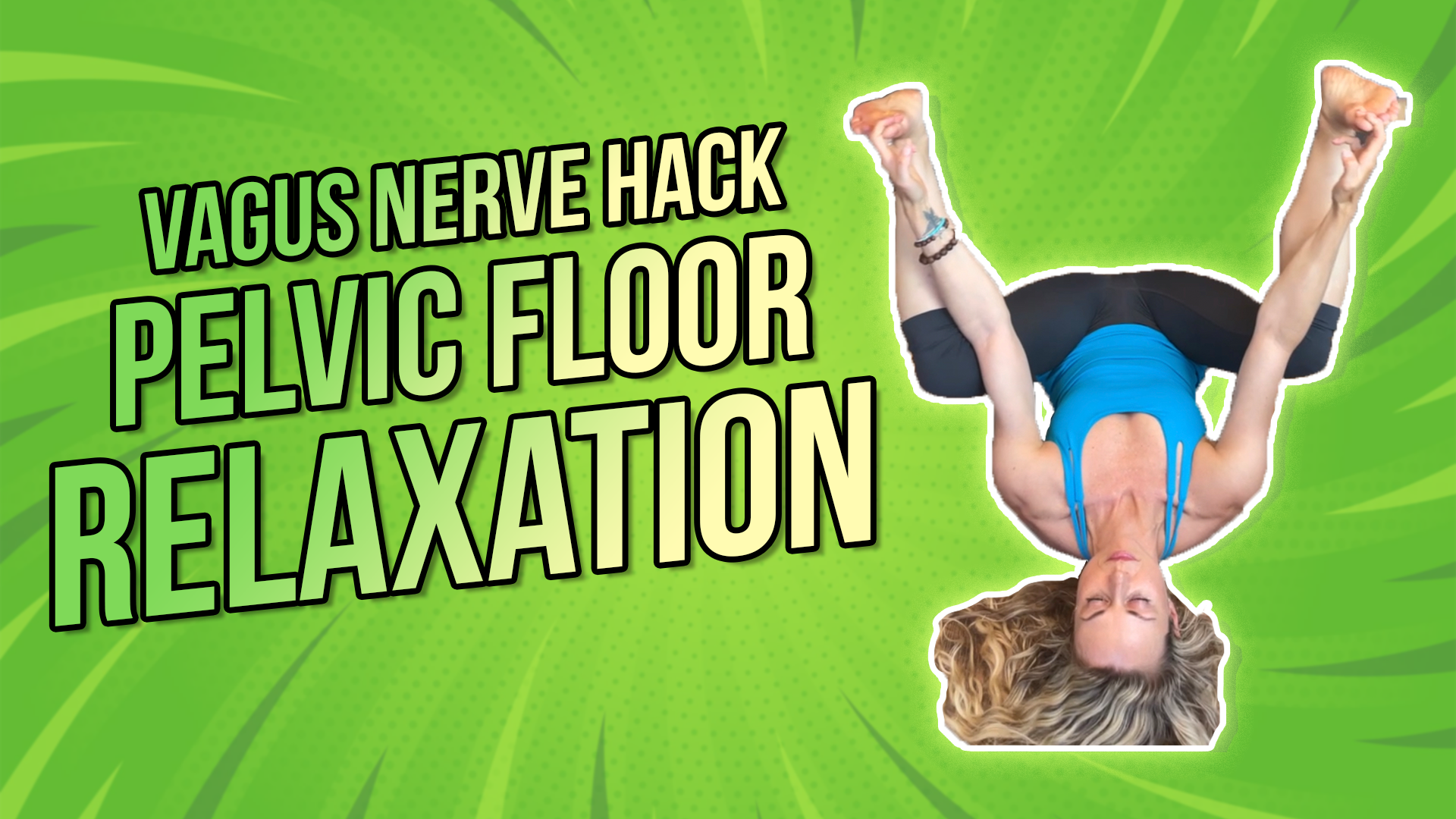Are you experiencing chronic constipation or feeling like you’re bearing down when going to the bathroom? Here are three pelvic exercises for constipation you should try!
Rather watch or listen?
The connection between the pelvic floor and bowels is crucial. As pelvic floor therapists, we frequently discuss this, especially if you’re experiencing bowel issues. The pelvic floor and the bowels must work in sync all the time. When constipated, many tend to bear down or push down into the pelvic floor to facilitate bowel movements. Let’s delve into some basic mechanics first before discussing strategies.
Understanding the mechanics
When we’re looking at the pelvis, we want to think about our natural breathing mechanics. So, when we’re breathing in, the diaphragm comes down, and we create this intra-abdominal pressure that fills to the base of the pelvic floor. This should be a 360° pressure, not a downward pressure into the pelvic floor. The pelvic floor is lengthening on your inhale and when we exhale, the pelvic floor is contracting.
Anytime that we lose these natural mechanics or coordination of our respiratory diaphragm and our pelvic diaphragm, then we begin to have issues. So, for example, if you are doing heavy weight training, unless your are creating a proper valsalva, then you’re pushing down into the pelvic floor, which is what will contribute to leaking. It is extremely important that we have optimal mechanics for healthy bowel movements and life, of course!
3 pelvic exercises for constipation
1. Utilize a Squatty Potty
The first recommendation that I’d like to give is to use a Squatty Potty. You can use blocks or another object to raise your feet, but this will allow for proper pelvic positioning. When you have your knees a little bit higher than your hips, then you can create an optimal pelvic position to open the pelvic outlet to allow for a healthier bowel movement.
2. Practice Diaphragmatic Breathing
As soon as you are about to go to the bathroom, you can perform slow diaphragmatic breaths. Inhale through the nose, while having your tongue at the roof of the mouth, creating proper intraabdominal pressure, then relaxing as you exhale, while the pelvic floor gently contracts. You want to create a sense of relaxation. We have to be in a relaxed state to defecate, urinate, and have an orgasm.
3. Try the “Belly Big, Belly Hard” Technique
When you feel like you are about to push, you want to take that pause and consider using the “Belly Big, Belly Hard” technique. This is where we want to prevent the downward pressure on the pelvic floor, which creates faulty mechanics and significant pelvic floor dysfunction over time.
Make a fist with your hand, just like you’re making a straw. Breathe in through the nose, blow into the “straw” for 3 seconds, and then pull away.
That will create the appropriate amount of pressure to allow you to have a healthy bowel movement without pushing. You’re creating the optimal amount of 360-degree pressure, You’re going to let the cheeks puff up as you’re doing it and as you’re exhaling, it should feel like you’re able to have a relaxed bowel movement.
It’s a great technique for when you feel like you’re about to push. You may need to perform a few times. It is extremely effective.
If this was helpful, please give it a like, share it, and subscribe to our YouTube channel, the Movement Paradigm, for weekly tips on mindset, nutrition, and movement. Our goal is to help you live your best life, heal, transform, and, more importantly, thrive.
You can always join us in our app, the Movement Paradigm. We have lots of challenges every other month—everything from movement to the nervous system, nutrition, and so on. And we have a great community of people.
You can also reach out to us for an individual appointment as it relates to the physical pain that you might be having and any emotional issues that you’re dealing with, such as anxiety or depression. If you really want to get to the root cause, please reach out to us.
Other things that might interest you:




